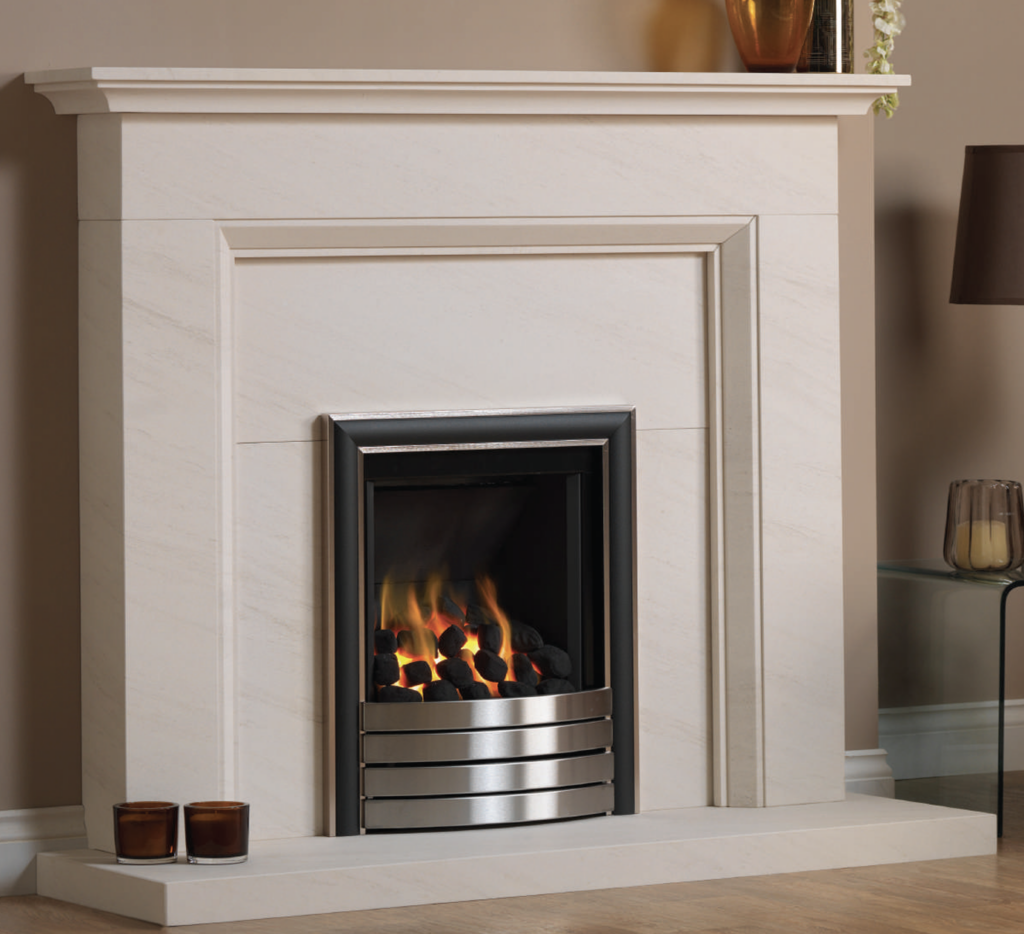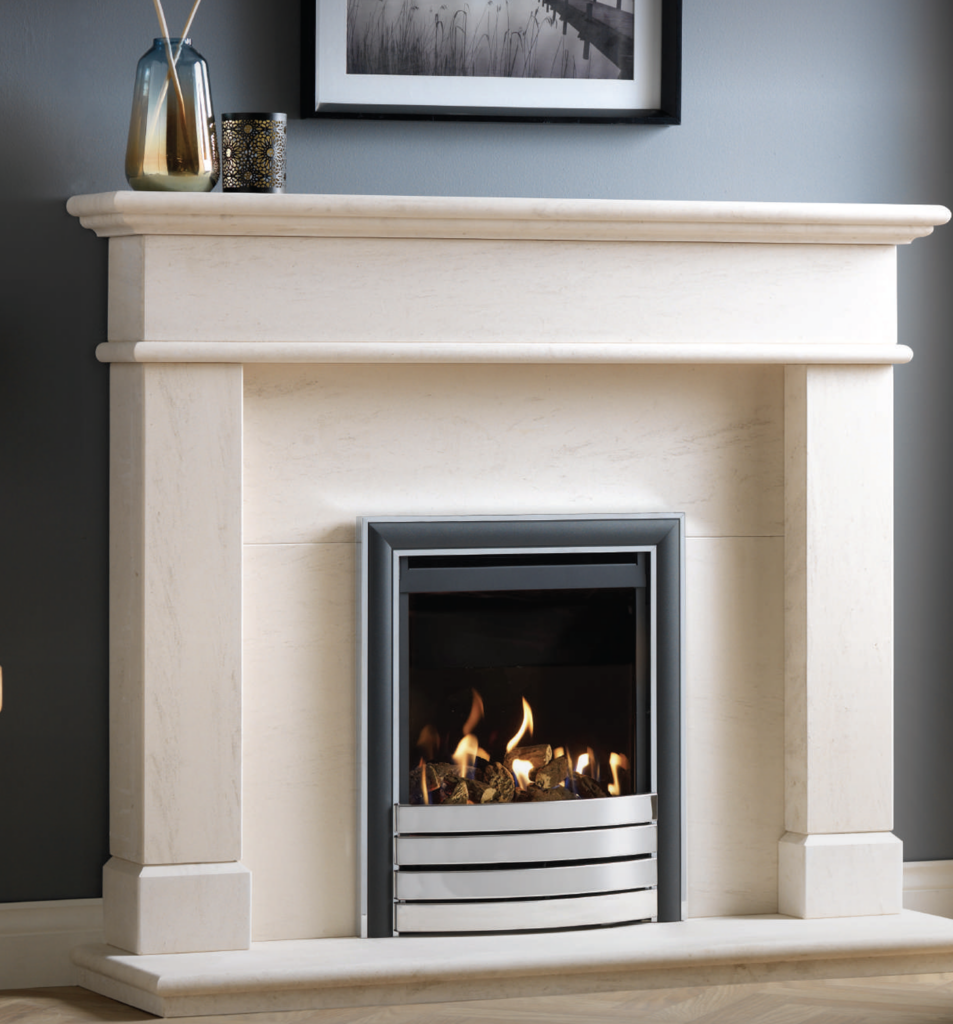There is nothing more welcoming than a living flame. The Paragon range of gas fires found in our extensive lineup have been warming homes since the 1980s. Over the years, Paragon has become a trusted name people rely on in the busy gas fire market.
Paragon offers both open-flame fires and glass-fronted gas fires. But what are the key differences?
Open-Flame Gas Fires:
The original gas fires are those that are open-flame. In the Paragon range, these include:
1. Paragon 2000 Plus
2. Paragon 2000 Low Lintel
3. Paragon Slimline 3
4. Paragon One Evolution
The Paragon 2000 is the longest serving open fire in our range. It’s the most versatile in our range, too, and designed specifically for chimneys or pre-cast flues. The Paragon 2000 Plus produces up to 3.45kW heat output at a 57% efficiency. The Paragon 2000 Low Lintel originates from the 2000 Plus but has a reduced-height fire box to fit into 20″ openings.
The Slimline 3 offers an increased heat output of 4.1kW and an impressive 65% efficiency. Its distinctive slim design is specifically designed for pre-cast flues but will fit almost any flue. The final open-flame gas fire is the Paragon One Evoluton. This fire incorporates the very latest gas technology and is designed to fit most chimneys and class 2 flues. It’s the most powerful open-flame fire with a 4.4kW heat output.
Our Paragon 2000 Plus – in Elite Satin/Black Fascia and Coal Fuel, with an Aylesbury Limestone Surround (Open-Flame):

Open-Flame – Ideal For:
The open-flame gas fires are perfect for those who value tradition and love to see an exposed flame. While they may not be as efficient as glass-fronted fires, they are a trusted choice for many who have already enjoyed many years of being kept warm through an open-flame fire. They are practical, and although they embrace tradition, they also have a host of modern conveniences, such as remote control operation, and some can run on natural gas or LPG.
Glass-Fronted Gas Fires:
If you want the traditional look of gas fire but also wish to enjoy maximised efficiency and output, the glass-fronted gas fires in the Paragon range are the perfect choice. The updated full-length ceramic glass windows gives you increased efficiency. This is because heat from the room is not being drawn into the fire in large quantities, which occurs with an open-flame fire due to there being no sealed glass. So, while you may trade in the traditional look to some degree, you do benefit from increased efficiency. The glass-fronted traditional design gas fires in the Paragon range include:
1. Paragon Focus HE
2. Paragon Focus RS Plus BF
3. Paragon Core HE
4. Paragon Core BF
The Focus HE has an efficiency of 82% and 4.4kW output, while the Focus RS Plus BF is, as the name indicates, a balanced flue (BF) fire. This means you don’t need a chimney, and it gives a mighty 85% efficiency and 4.3kW output. The Core HE goes a step further and provides core burner technology and provides the ultimate in realistic flickering flames. The Core BF incorporated this core burner technology but is a balanced flue and provides an incredible 89% efficiency.
Glass-Fronted – Ideal For:
The glass-fronted gas fires are perfect for those who wish to experience a traditional gas fire, but with an added focus towards increased efficiency – at a level which is simply not possible with an open-flame gas fire.
Our Paragon Core BF – in Satin/Black Elite Fascia with Log Fuel Bed shown in Balmoral Limestone Surround (Glass-Fronted).

Which is best for me?
Having read this article, you should be in a better position to decide what is best for you. We can’t give you the answer. The next step, if you’re unsure, is to visit a local showroom. You can visit our store locator here.
If you prefer to view our Paragon range in more detail, along with other gas fires in our range, including Infinity and Panache then please download our Gas eBrochure here.
Notes:
What is a pre-cast flue?
A pre-cast flue is 5 inches in diameter and is regularly found in houses built from the 1960s onwards. The actual flue is made of blocks from clay or concrete and sits in the cavity of the house wall.
What’s the difference between Class 1 and 2 Flues?
A flue with a minimum internal diameter of 7 inches is regarded as a Class 1 flue. A Class 2 is around 5 inches.
What is a Balanced Flue?
A balanced flue (BF) works with glass-fronted fires. The fire is sealed from the room, and two pipe vents directly outdoors. Air for combustion is drawn in from one pipe, and the other removes combustion gases into the atmosphere. A balanced flue is used when there is no chimney.








